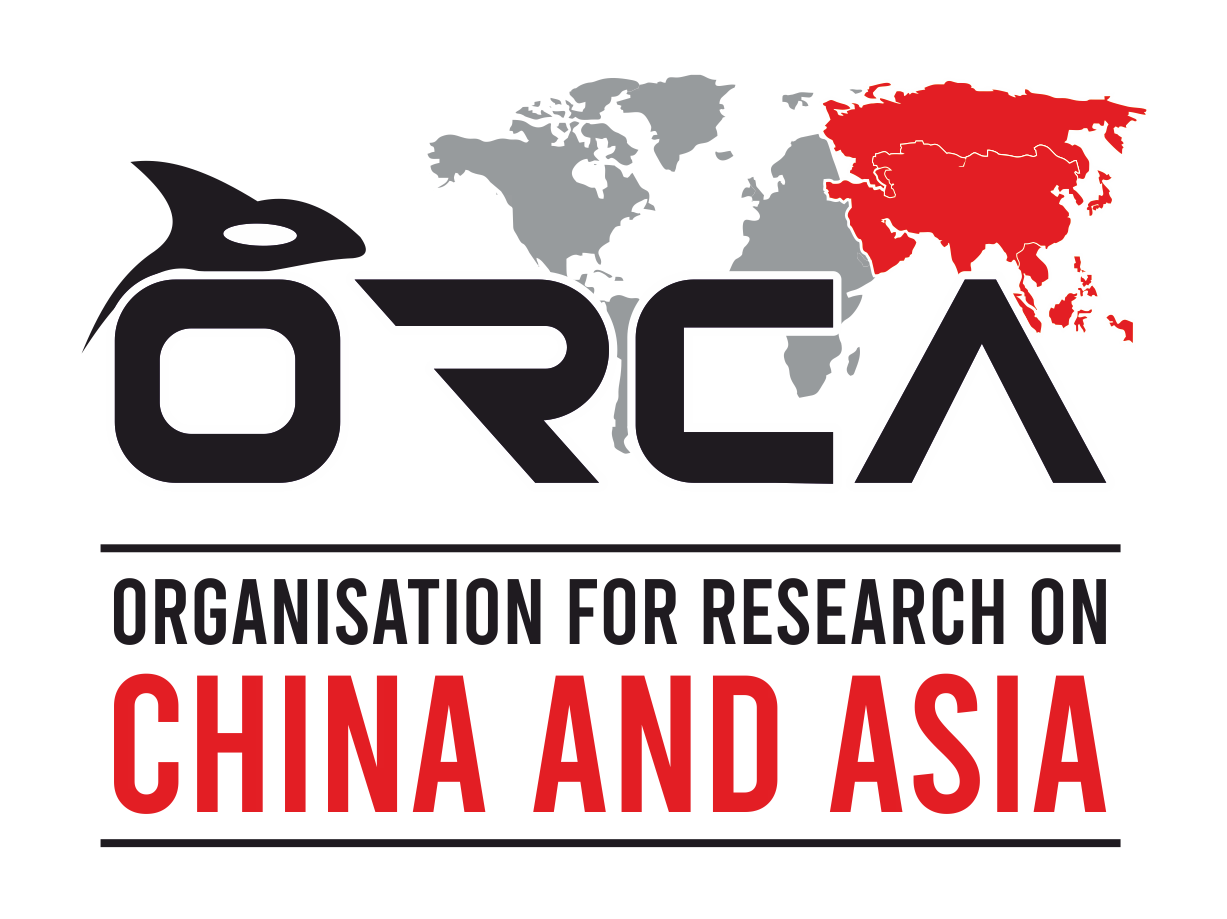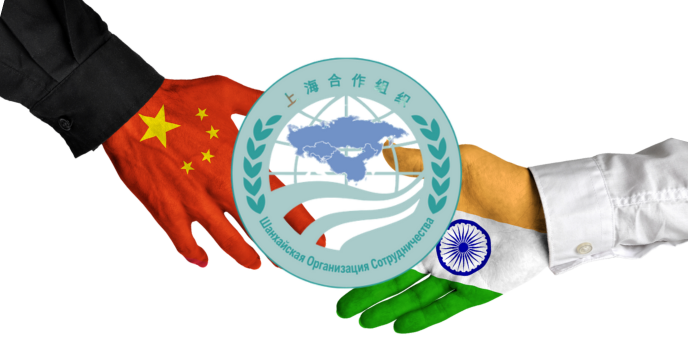The most recent rounds of India-China engagement—via the SCO Security Council Secretaries’ and Defence Ministers’ meetings—offer a sharp illustration of the contradiction that defines their current bilateral: a willingness to engage diplomatically coexisting without strategic reconciliation.
India’s National Security Advisor Ajit Doval’s exchange in Beijing with Politburo member and Foreign Minister Wang Yi on June 23 was followed by Defence Minister Rajnath Singh’s handshake with Chinese Defence Minister Admiral Dong Jun in Qingdao on June 26th, marking the continuation of diplomatic courtesies. But this diplomatic thaw—placed between the Narendra Modi-Xi Jinping interaction at the BRICS Summit in Johannesburg in 2024 and the signing of the October 2024 border agreement—is not underpinned by real behavioral change. Behind the veneer of engagement, China’s sustained economic coercion—particularly in the rare earth and agricultural sectors—signals that Beijing’s tactical openness masks a fundamentally unchanged posture.
After the informal summitry that once defined the pre-Galwan phase of India–China relations, expectations for another leader-level interaction at the upcoming BRICS Summit have dimmed. Xi Jinping’s reported decision to skip the Rio de Janeiro summit, allegedly provoked by Brazilian President Lula’s decision to host Prime Minister Modi for a state dinner, further illustrates the erosion of political trust—even as both sides continue to engage in diplomacy. Hence, while SCO saw ministers invoke "mutual trust" and “overall development” in public, Chinese actions reveal a twin-track approach toward India—maintaining diplomatic channels and economic engagement in public, while simultaneously tightening its grip on sectors where India remains dependent. Among the clearest examples of this is China using rare earths curbs and agricultural barriers to apply pressure while engaging with India at SCO to signal that even essential and potentially stable sectors are not immune to geopolitical contestation
Agricultural Choke Points as Frontiers of Coercion
China has halted or indefinitely delayed the export of key agricultural materials such as hybrid seeds, specialty micronutrient fertilizers, and enzymes vital to India’s high-value horticulture sector. Chinese customs authorities have simply ceased inspections for India-bound agricultural shipments, effectively stalling them without issuing a formal ban. These materials continue to flow to other countries, indicating that the disruptions are not due to technical or capacity issues but are politically selective.
Given the increasing digitization and tech infusion in Indian agriculture, China's slowdowns or rejections of licenses for Indian seed labs and agro-research partnerships represent not just trade impediments, but a deeper strategy of selective technological denial. This extends beyond economic disruption: it is a form of food security leverage with long-term consequences for India’s agricultural productivity and innovation ecosystem. Agriculture remains a core economic sector—over 40% of India’s workforce is still rural-based—and such input restrictions strike at both productivity and food security. The informality of the Chinese move—that is, the absence of any official justification—further compounds the challenge, making it difficult for New Delhi to respond through formal WTO channels or bilateral trade mechanisms.
Despite the meetings at SCO, China has not included India in the list of countries for whom it announced on June 27th a loosening of its ban on urea exports. As former Foreign Secretary Vijay Gokhale has noted, this experiment with grey-zone economic pressure "bears close watching" not only because of its immediate impact on India’s agricultural sector, but also because it signals China’s growing comfort with weaponizing informal economic levers without overtly violating global trade norms. By operating beneath the threshold of formal sanctions, Beijing preserves plausible deniability while still inflicting asymmetrical costs—rendering traditional tools of diplomatic redress inadequate and further eroding trust in the bilateral relationship.
Amid growing uncertainty over Chinese agricultural inputs, India is also beginning to diversify its partnerships. In June 2025, the Indian Council of Agricultural Research (ICAR) signed an agreement with the International Potato Center (CIP) in Peru to establish a gene bank and research collaboration centre in Agra. The initiative aims to strengthen India’s agrobiodiversity and germplasm access, particularly in climate-resilient and disease-resistant crop varieties—a strategic move to reduce dependence on any single country for high-value seed technology and food security inputs. The proposed centre in Agra comes eight years after China established a similar CIP facility—the China Center for Asia Pacific (CCCAP)—in Yanqing, Beijing, in 2017, which serves China as well as East Asia and the Pacific. In contrast, India’s Agra centre is envisioned to cater not only to domestic agricultural needs but also to broader South Asian partners, positioning India as a hub for climate-resilient agri-research and advancing its soft power and development diplomacy across the Global South.
Rare Earths: The Magnetism of Dependency
The agriculture barriers were preceded by China’s rare earth magnets export curbs, where China’s grip over the global rare earth supply chain has long been a vulnerability for India. In April 2025, China's Ministry of Commerce (MOFCOM) and the General Administration of Customs (GAC) introduced new export license requirements for seven types of rare earths and finished magnets, claiming they were “to better safeguard national security and interests” in response to US tariffs. While India has reportedly engaged with China in dialogue regarding rare earths, this disruption presents both a challenge and a wake-up call for India which is investing heavily in green technologies and indigenous defense manufacturing.
Major Indian automakers and electronics firms have reported month-long delays and stalled procurement contracts. While Beijing continues to supply other global markets (notably in ASEAN, Africa, and Latin America), Indian firms face opaque hurdles in securing approvals. These delays affect not just EV manufacturing but also strategic sectors like satellites, defence electronics, and wind energy. The Ministry of Commerce in India confirmed ongoing disruptions and called for predictability in supply chains but the Chinese side has remained non-committal, invoking procedural language around regulatory approvals while continuing to deny India the very “a cooperative pas de deux of the dragon and the elephant” that Wang Yi spoke of at his SCO meet with NSA Doval.
China has weaponized rare earth exports before—most famously against Japan in 2010 following a maritime dispute, prompting Tokyo to look to Indian suppliers. The current restrictions on India appear to follow a similar logic, with rare earth magnets becoming leverage points amid broader strategic friction. In response, New Delhi is no longer merely a reactive actor. India has reportedly reached a rare earth collaboration agreement with Kazakhstan, Kyrgyzstan, Tajikistan, Turkmenistan, and Uzbekistan—finalized during the recent India–Central Asia Dialogue in New Delhi—as part of a concerted push to diversify upstream supply chains. This move comes amid reports that India’s automotive sector is nearing critical shortages of rare earth magnets due to prolonged Chinese export delays. Together with the Quad’s Critical and Emerging Technology (CET) working group and ongoing bilateral dialogues with the EU, these initiatives could form the backbone of a multi-vector strategy to de-risk India’s dependence on China by expanding partnerships across both strategic and resource-rich geographies.
The SCO as Venue: China’s Dialogue Without Deliverables
The SCO has historically been a paradoxical platform for India and China. Though both states participate under the banner of Eurasian stability, the meetings between their officials often serve as non-committal optics—useful for maintaining contact, but rarely substantive in terms of resolving conflict.
This year’s edition was albeit different. Defence Minister Rajnath Singh’s decision to withhold India’s endorsement of the SCO joint statement underscored New Delhi’s growing unwillingness to legitimize narratives that implicitly endorse Chinese territorial claims or strategic initiatives. India objected to the omission of the April 22 Pahalgam terror attack and the inclusion of references to Balochistan, which India viewed as a deliberate attempt by Pakistan and China to distort the focus of counterterrorism discourse. By declining to sign the statement, India effectively signalled that counterterrorism cannot be subordinated to geopolitical balancing or diluted by selective framing.
At a time when diplomatic discourse calls for normalcy, Beijing has quietly imposed selective export controls aimed squarely at Indian dependencies. There is thus a striking disconnect between the Chinese state’s diplomatic register and its economic behavior. India’s diplomatic corps continues to emphasize high-level engagement, and Chinese officials regularly speak of “win-win cooperation and properly managing differences” as learnt from their study of Xi Jinping Thought on Diplomacy. But in the crucial domains that hold potential to underpin future growth—technology inputs, agriculture, and critical minerals—China has systematically undermined India’s ability to function autonomously. Regulatory chokepoints, informal trade barriers, and strategic delay are become common methods of non-militarist distrust projection.
These actions are not isolated, but exemplify a kind of lawfare in economics where the use of non-transparent administrative processes serves as a blunt geopolitical instrument. By halting rare earth approvals or delaying seed consignments, Beijing sends a message: dependence is vulnerability, and disagreement has costs.
While the optics of high-level meetings like the SCO encounter suggest momentum, India-China relations continue to operate in a competition-cooperation paradigm. To that end, the real task is not just diplomatic balancing—but building structural resilience in critical sectors where China today holds leverage. Until that happens, the fault lines will remain hidden beneath the rituals of summits and handshakes—but no less sharp for it.



Author
Eerishika Pankaj
Eerishika Pankaj is the Director of New Delhi based think-tank, the Organisation for Research on China and Asia (ORCA), which focuses on decoding domestic Chinese politics and its impact on Beijing’s foreign policymaking. She is also an Editorial and Research Assistant to the Series Editor for Routledge Series on Think Asia; a Young Leader in the 2020 cohort of the Pacific Forum’s Young Leaders Program; a Commissioning Editor with E-International Relations for their Political Economy section; a Member of the Indo-Pacific Circle and a Council Member of the WICCI’s India-EU Business Council. Primarily a China and East Asia scholar, her research focuses on Chinese elite/party politics, the India-China border, water and power politics in the Himalayas, Tibet, the Indo-Pacific and India’s bilateral ties with Europe and Asia. In 2023, she was selected as an Emerging Quad Think Tank Leader, an initiative of the U.S. State Department’s Leaders Lead on Demand program. Eerishika is the co-editor of the book 'The Future of Indian Diplomacy: Exploring Multidisciplinary Lenses' and of the Special Issues on 'The Dalai Lama’s Succession: Strategic Realities of the Tibet Question' as well as 'Building the Future of EU-India Strategic Partnership'. She can be reached on [email protected]